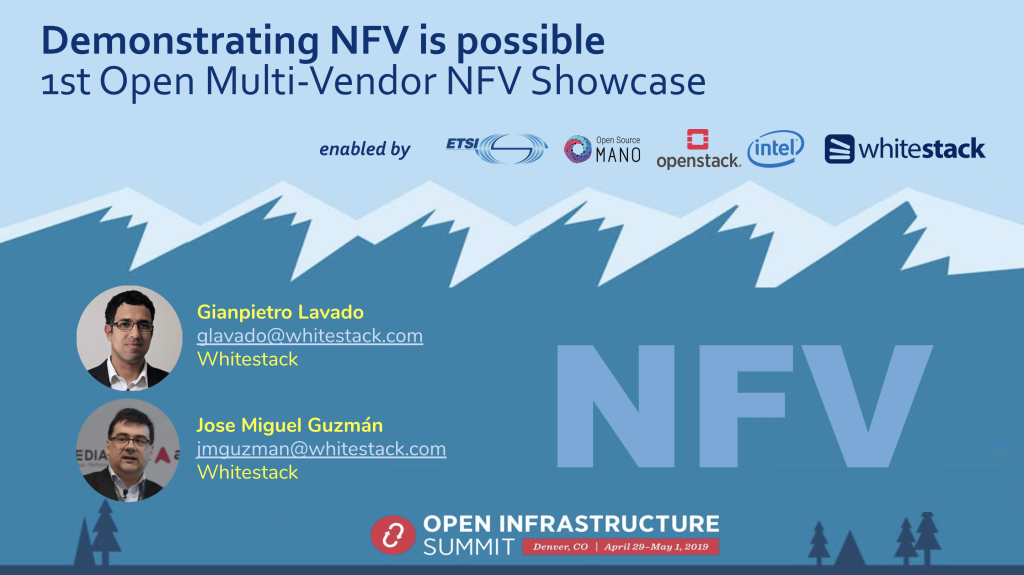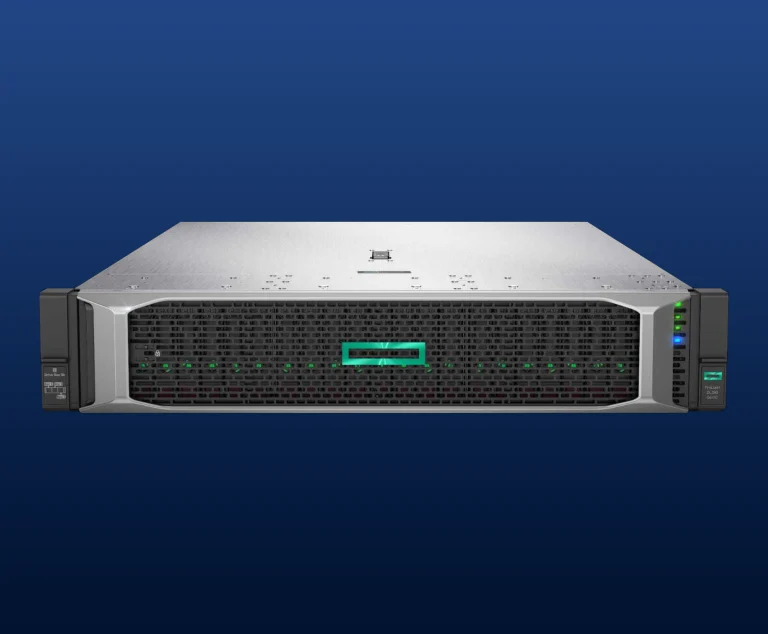The multi-vendor NFV Showcase is an effort to bring together a number of reputed vendors and organizations, to demonstrate that building production-ready multi-vendor networks is possible, within 4 weeks, on top of Open Technologies.
Last March we decided to start an initiative to provide the industry with real multi-vendor Network Functions Virtualization (NFV) use cases, in action.
Because of our active collaboration with ETSI, Openstack Foundation (OSF), and the Open Source MANO (OSM) project, we felt we were in the right position to coordinate a showcase.
We also found it valid to contribute with our well-tested and robust WhiteNFV (our commercial distribution of OSM), and WhiteCloud (our commercial distribution of OpenStack) distros to facilitate the set-up. Intel contributed with powerful servers (leveraging their latest Scalable Processors and Solid-State drives), and we invited a selected group of “Virtual Network Functions” (VNF) vendors, who felt comfortable taking up the challenge.

As a summary, after 4 weeks of work, we succeeded in deploying a multi-vendor virtual Evolved Packet Core (vEPC) on Openstack, running on Commercial-of-the-Shelf servers (COTS) and orchestrated by OSM.
We presented the results during our hands-on presentation in the Open Infra Summit 2019 (Denver) and in the below attached report.
Executive Summary
The industry is taking more time than expected to adopt a more generic NFV architecture. Since 2012, when the foundational paper was published by a number of Tier-1 operators, vendors have adopted virtualization, which made their deployments more efficient, but not necessarily have made the network more efficient.
Traditional vendors do not feel completely ready to move to the Cloud, as their solutions rely on more traditional software technologies (that still rely on static configurations) and prefer to scale by increasing the computing power.
Operators are more used to handling contracts with a number of trusted vendors than to integrating systems (which leads to very homogeneous networks). They are still concerned about “scapegoating the software of the hardware vendor”, or whether their “operational costs will increase if they integrate multiple vendors”.
Important global organizations (e.g. ETSI or the Linux Foundation and its projects) are working on the creation of the architectures, practices, software components and tools needed to facilitate and reach industry maturity, which requires validation and getting more traction.
We deemed our multi-vendor NFV Showcase a reality check, where we invited a number of VNF vendors to build a virtualized Evolved Packet Core altogether, by using standardized models and descriptors to create VNF Packages, which can be deployed automatically through the use of an open source MANO stack on top of an open source VIM (OpenStack), sitting in its turn on top of commodity-of-the-shelf hardware.
This set-up was made possible with the help of a number of companies and organizations that enabled the testing framework:
Deploying a virtualized Evolved Packet Core, instantaneously.
The objective was to build a multi-vendor network service that was suitable for a production environment. We decided to implement a virtualized Evolved Packet Core (vEPC) by integrating VNFs from different vendors:
The implemented architecture is depicted here:

We needed to onboard all the VNFs by creating VNF Packages that took care of Day-0, Day-1 and Day-2 operations, and then model the Network Service Descriptors (NSD), in order to allow OSM to deploy the end-to-end service automatically in the NFV Infrastructure (NFVI).
All the details are available in the report.
Get the Report
Receive the full report in your email, in seconds.




